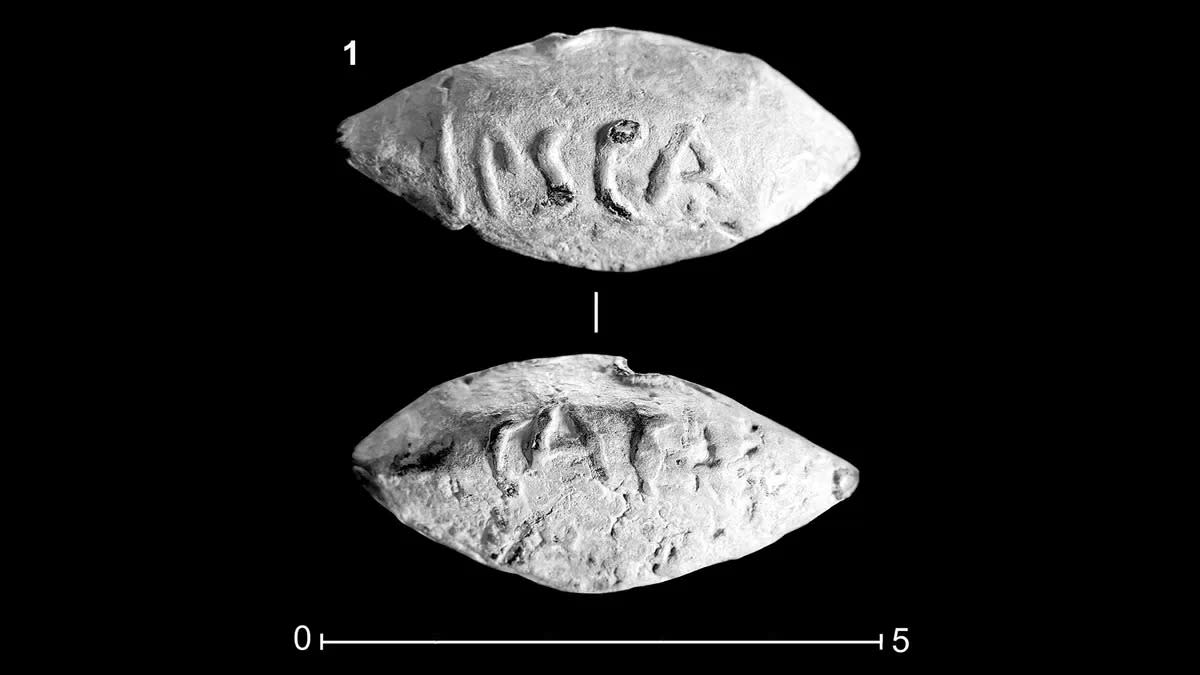Archaeologists Just Found An Ancient Roman Bullet With Julius Caesar's Name On It

The study of a 2,000-year-old bullet found in Spain gives clues to the final days of the Roman civil war.
The almond-shaped lead bullet, likely used in a slingshot, offers potential evidence of support for Julius Caesar in his battle against Pompey the Great.
Inscriptions on bullets were common ways to send messages or spread propaganda.
Bullets flung from slingshots 2,000 years ago did more than take down soldiers or dent shields. They also sent literal messages that, lucky for us, have survived until today.
In a study published last year in the journal Zephyrus, a team of Spanish researchers explained how an almond-shaped lead bullet offers clues to the final days of the Roman civil war in Spain. That campaign—a battle between Julius Caesar and Pompey the Great—lasted roughly four years and spanned half a dozen territories before culminating in southern Spain, where Caesar secured victory.
The empire’s ruler may have gotten a little help in battle from the previously unknown town of Ipsca, according to the bullet in question. The 1.8-inch by.8-inch bullet weighing 2.5 ounces, explained Live Science, featured a raised inscription—“CAES” was writted on one side and “IPSCA” on the other.
The study’s authors claim that the CAES most certainly refers to Caesar and shows support for the ruler. The only other known inscribed bullet found in Spain with his name, according to Live Science, reads “CAE / ACIPE” translated something akin to “Take that, Caesar.” That’s not a phrase of support.
With much of Spain sided with Pompey, the support for Caesar that this bullet demonstrates is unique. But where did it come from? The bullet itself offers the clue, with IPSCA most likely referring to an ancient town.
The study authors wrote that they believe “this piece could maintain direct relationships with the war events” found in Latin works that detail Caesar’s war efforts (such as Bellum Hispaniense) “since some of its most relevant episodes occurred in this geographical environment.”
The bullet was discovered near present-day Montilla, Spain, but there’s no record of Ipsca in older writings. Still, the inscription could easily have spelled out the town’s support for Caesar. These inscribed bullets “were made because they were very useful instruments for housing short, very specific messages,” Javier Moralejo Ordax, the study’s lead author and an assistant professor of archaeology at the Autonomous University of Madrid, told Live Science. He added that this bullet may have served as propaganda and reassurance to Caesar’s army that the town of Ipsca was on their side.
“Most of the indigenous cities were loyal to Pompey and his sons,” Moralejo Ordax told Live Science, noting that Ipsca “probably manufactured ammunition for Caesar’s troops and perhaps provided [slinger] troops for his armies.”
You Might Also Like
